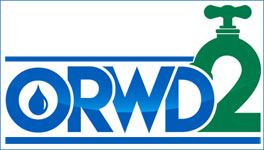Welcome to the Official Website of Okmulgee Co. Rural Water District 2
Our Mission
At Okmulgee Co. Rural Water District 2, we are committed to providing safe, high quality water services to our community, while maintaining a standard of excellence in customer service and environmental conservation.
Office Business Hours
Open to the Public
M-F: 8:30 A.M. - 12:30 P.M.
Closed on Holidays
12:30-4:30 By Phone or Appointment
24 Hr. Drive through Secured Payment drop box
Phone: 918-756-8910
Fax: 918-759-9090
TDD#711
After Hours Emergency Line:
918-759-7069
Bill Payment Options
24-Hour Payment Service
1-877-885-7968
Looking for the most convenient way to pay your bill? We offer a wide variety of payment options to our customers. Simply choose the option that best suits your needs... Learn more...
Conservation Tips
There are a number of easy ways to save water, and they all start with you. When you save water, you save money on your utility bills. Here are just a few ways... Learn more...


